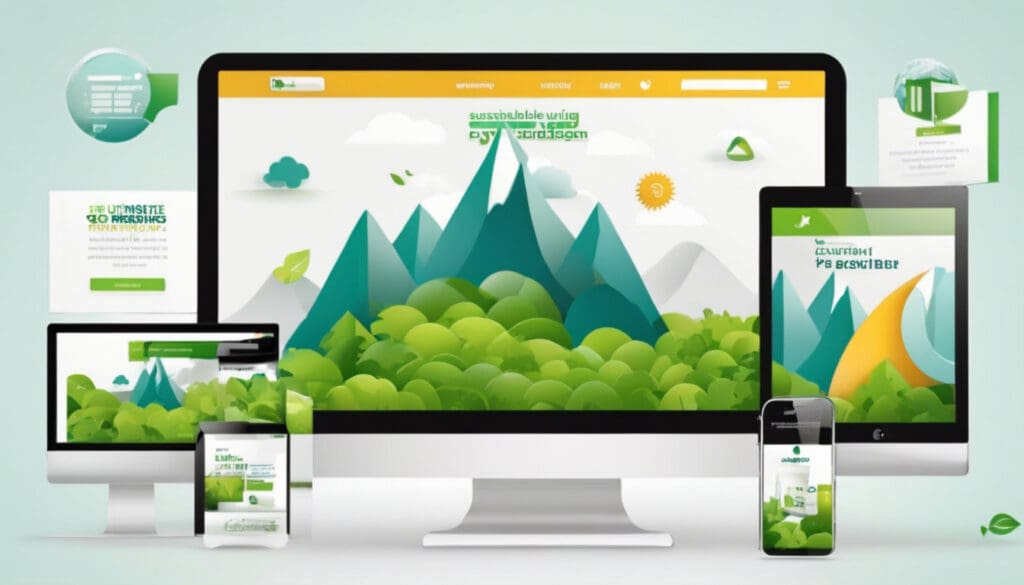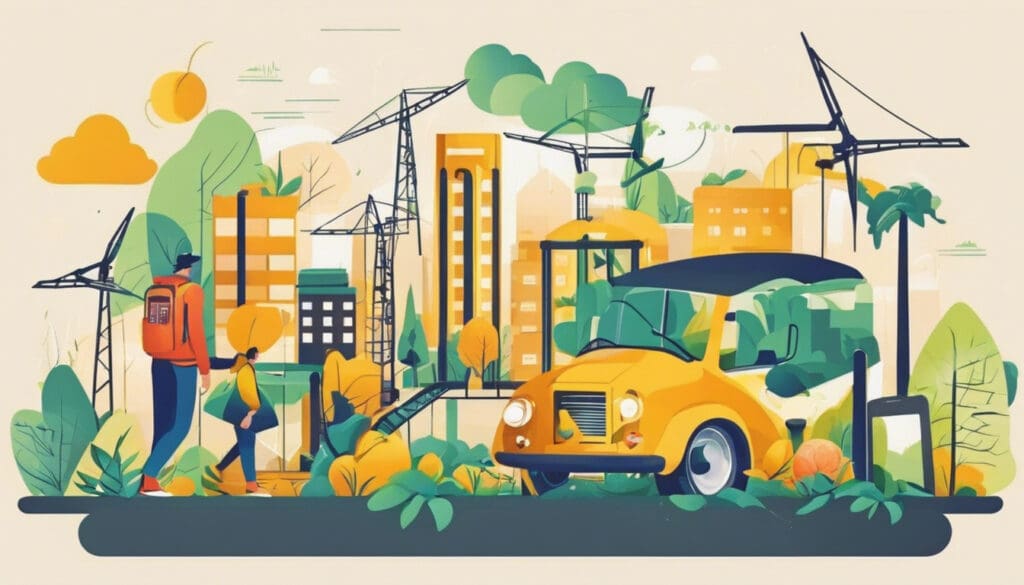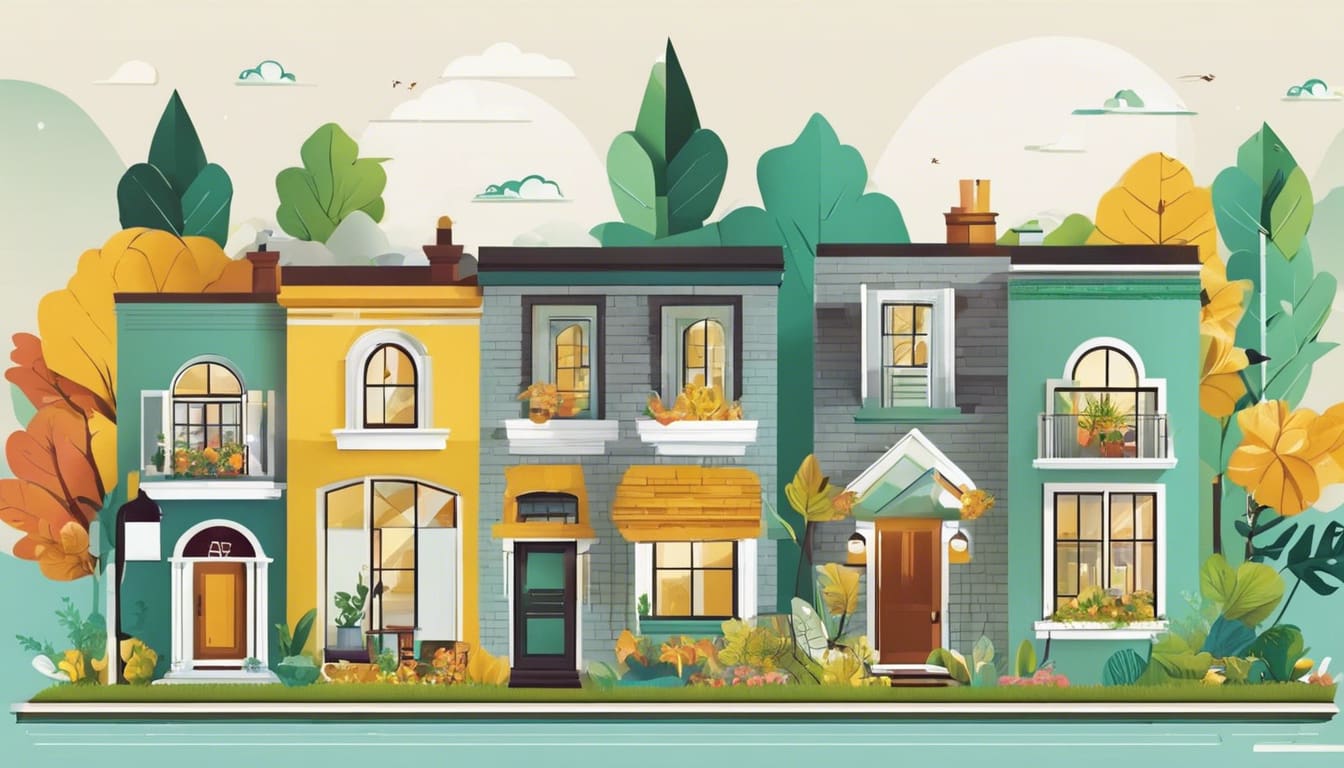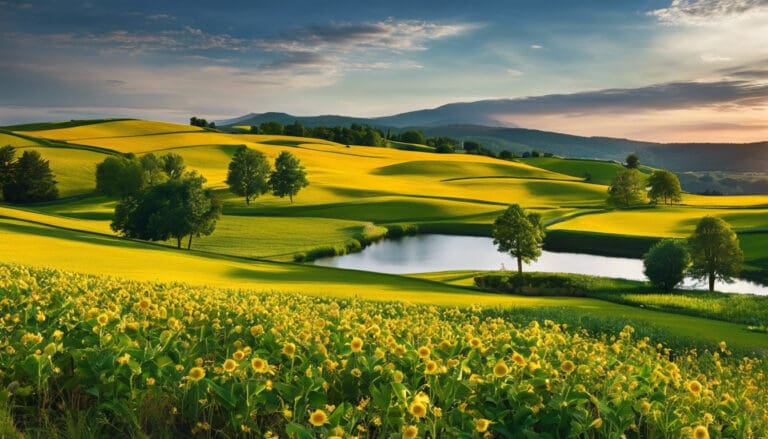Have you ever thought about the effect of your online activities on the environment? Surprisingly, the internet uses about 10% of the world’s electricity. This brings up the topic of sustainable web design. This method not only lowers your online carbon footprint but also meets the rising demand from consumers for environment-friendly businesses. Using green web hosting, creating websites that use less carbon, and following overall green website practices can greatly reduce the environmental toll of your online presence.
This guide will go through what it takes to build a website that is both efficient and kind to the environment. We’ll show you practical steps to make your website friendlier to the planet, from picking green web hosting to applying low carbon design rules. We’ll see how these steps can help the Earth as well as improve the user’s experience and maybe even cut down on website costs.
Are you ready to make a change? Let’s explore how to create a website that looks good and is good for our planet.
What is Sustainable Web Design?
The Basics of Sustainable Web Design
Sustainable web design is about using strategies that lower a website’s environmental impact. It means making choices that make a site run more efficiently, need less power, and produce less waste. Every part of creating and running a website, from the server to the interface, gets looked at for its environmental effect.
Choosing green web hosting and focusing on green website elements are key steps in creating a sustainable online presence. Also, sustainable web design includes taking care of a website over time, ensuring it stays green in the long run. For further insights into sustainable web practices, the Smashing Magazine provides an in-depth guide.
Why Go Green with Your Web Design?
In a world full of digital technology, we can’t overlook the carbon footprint of our online actions. Websites, like any digital service, use energy – directly from data centers and servers, and indirectly through the devices we use. Sustainable web design is vital for cutting down this impact. It promotes low-carbon design rules and supports a more sustainable future.
It’s not just about saving energy; green web design also betters user experience, speeds up website loading, and can even boost SEO, benefiting both the planet and website owners.

Key Principles of Sustainable Web Design
Designing Efficiently
An efficient design means websites load fast and run smoothly, using less energy for data handling and sending. This involves smart use of graphics, a simple site layout, and putting content in the right spots. Tips for saving energy with design include making images smaller and using simpler designs.
Cutting Down Data Transfer
Another important rule is to lower the data sent between the server and the user. This can be done by minimizing code, compressing data, and using caching well. These methods not only reduce carbon footprints but also make websites load faster, improving the user’s experience.
Green Website Practices
Adopting green web design trends, like using renewable energy for web hosting and getting green certificates for websites, is a big part of sustainable web design. Also, picking green content management systems that back up these practices is crucial for lasting sustainability.
Choosing Green Web Hosting
Understanding Green Web Hosting
Green web hosting uses services powered by renewable energy or that balance out their carbon output with carbon credits. These providers focus on energy efficiency in their data centers and aim to minimize environmental impact.
The Upsides of Green Web Hosting
Picking green web hosting reduces your website’s environmental toll and can better its public image. Some green hosts also offer improved performance for green websites, which might help with SEO and user experience.
How to Pick a Green Web Host
When choosing a green web host, look for clarity about their green practices, energy sources, and certifications. It’s also key to check their performance, reliability, and customer service to make sure they fit your needs.

Designing for a Low Carbon Footprint
Making Images and Videos Load Faster
Big images and video files can slow a website and up its carbon footprint. Optimizing media for quick loading, choosing the right formats, and using responsive images can cut down energy use across devices.
Using CSS Smartly
CSS is a big part of web design. Intelligent, sustainable CSS methods, like CSS sprites and avoiding heavy frameworks, can lessen the code needed, leading to more efficient websites.
Keeping JavaScript Light
JavaScript adds to a website’s features, but too much or inefficient use can lower performance and sustainability. Using JavaScript wisely, applying lazy loading, and optimizing running times are good ways to reduce a website’s environmental impact.
Creating a Green Website
Using Green Tools and Plugins
Many tools and plugins can make a website more sustainable. For example, plugins that automatically optimize images or improve caching can greatly cut down on a website’s energy use and carbon output.
Going for a Green Content Strategy
A green content strategy involves making engaging content that doesn’t rely too much on elements that use a lot of energy. This means using fewer multimedia parts and thoughtfully using text and images to share messages clearly.
Keeping Accessibility in Mind
Making websites accessible means they can be used by everyone, including those with disabilities. This often goes hand in hand with efficiency and sustainability.

Keeping Your Website Green
Doing Regular Audits for Energy Efficiency
Regular checks help find ways to make a website use less energy. These checks can look at things like how fast pages load, how well servers work, and the overall user experience.
Keeping Content Fresh and Green
It’s important to keep content up-to-date and optimized for sustainability. This means often reviewing and updating content to stay relevant and load fast, using less energy.
Using Analytics for Green Improvements
Website analytics give valuable info on how users interact with a site. This data helps website owners make smart choices on optimizing their site’s design and content for both performance and sustainability.
Examples and Success Stories of Sustainable Web Design
Green Website Makeovers That Worked
Many businesses have revamped their websites with the environment in mind, seeing significant cuts in carbon output while improving user experience and SEO.
The Advantages of Green Web Hosting for Businesses
Stories of businesses switching to green web hosting show its positive effects on the environment and a company’s image, plus possibly better website speed and reliability.
New Ideas in Low Carbon Web Design
New and creative web design ideas are always emerging to lower carbon emissions. From sustainable user experience design to green coding, these ideas are the frontier of eco-friendly web development.

Why Choose Eco-Friendly Web Practices?
By this point, making your website eco-friendly should seem not only doable but necessary. Adopting low-carbon design rules and green web hosting is good for both the Earth and your website’s performance. You now have the knowledge to make meaningful changes—any action towards greener internet matters, whether it’s a small adjustment or a big redo.
Start now. Explore green options for your site, ask for help if needed, and share this guide with others. Your efforts can start a ripple effect, leading to a cleaner, more sustainable online world. Together, we can make a big impact, one website at a time.







